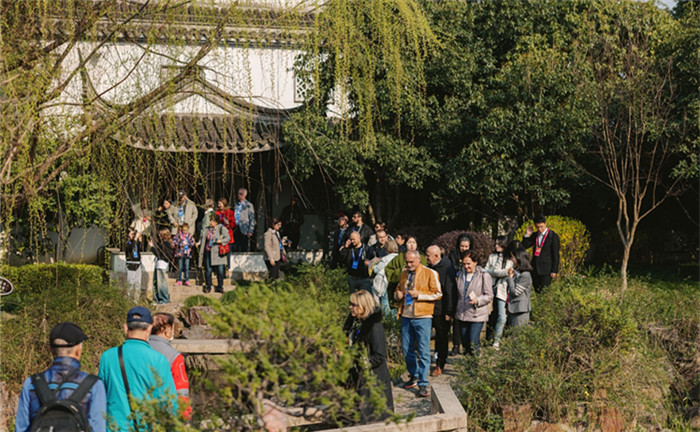Yangxian tea boasts 2,000 years of history

An aerial view of tea plantations in Yixing. [Photo/WeChat account: yixingfabu2015]
Traditional tea processing techniques and their associated social practices in China were added to UNESCO's Representative List of the Intangible Cultural Heritage of Humanity on Nov 23.

An aerial view of tea leaves in Yixing. [Photo/WeChat account: yixingfabu2015]
The techniques are mainly found in the provinces and autonomous regions of Zhejiang, Jiangsu, Jiangxi, Hunan, Anhui, Hubei, Henan, Shaanxi, Yunnan, Guizhou, Sichuan, Fujian, Guangdong and Guangxi. Associated social practices, however, are spread throughout the country and shared by multiple ethnic groups.

Workers process tea leaves. [Photo/WeChat account: yixingfabu2015]
Yixing, a county-level city in Wuxi, East China's Jiangsu province, has grown tea for nearly 2,000 years and is currently home to 75,000 mu (5,000 hectares) of tea plantations.
With a humid climate, abundant rainfall, and fertile soil, the mountainous area in southern Yixing grows the renowned Yangxian tea, which is known for its clear soup, fragrant smell, and mellow taste.

A cup of Yangxian red tea. [Photo/WeChat account: yixingfabu2015]
There are two main types of Yangxian tea – red tea and green tea – with the former being refreshing with a faint aroma and the latter being mellow.
Fermentation is the way to produce red tea, while green tea processing includes deactivation of enzymes and air drying.
-
Wuxi sows seeds of friendship as cherry blossom event begins
March 31, 2025
-
Find the beauty of Wuxi this spring
March 24, 2025
-
Wuxi dazzles the world at Spring Festival Gala
January 29, 2025
-
Harvest season for Ganlu black carp begins in Wuxi
January 3, 2025
-
Invitation exhibition of woodblock paintings opens in WND
December 9, 2024





 WeChat
WeChat
 Weibo
Weibo